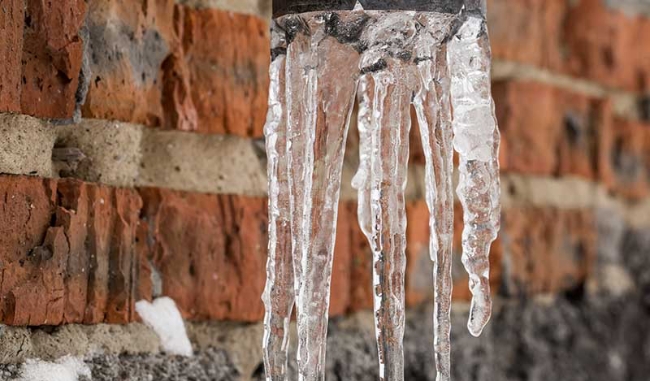Guidance for Avoiding Frozen Plumbing in Cold Weather: Specialist Insights
Guidance for Avoiding Frozen Plumbing in Cold Weather: Specialist Insights
Blog Article
Everyone maintains their unique piece of advice involving Helpful Tips to Prevent Frozen Pipes this Winter.

Cold weather can wreak havoc on your pipes, specifically by freezing pipes. Here's how to stop it from occurring and what to do if it does.
Introduction
As temperature levels decrease, the risk of icy pipes boosts, potentially leading to expensive repair work and water damages. Understanding how to avoid icy pipes is vital for home owners in cold environments.
Comprehending Icy Pipes
What creates pipes to ice up?
Pipelines ice up when subjected to temperatures listed below 32 ° F (0 ° C) for extended durations. As water inside the pipes ices up, it expands, putting pressure on the pipeline walls and possibly causing them to rupture.
Risks and problems
Frozen pipelines can cause water system disruptions, home damages, and costly fixings. Ruptured pipes can flood homes and cause considerable architectural damages.
Indications of Frozen Pipeline
Identifying icy pipes early can avoid them from rupturing.
How to recognize frozen pipelines
Search for lowered water circulation from faucets, uncommon odors or noises from pipelines, and visible frost on subjected pipelines.
Avoidance Tips
Insulating vulnerable pipelines
Cover pipes in insulation sleeves or utilize warmth tape to safeguard them from freezing temperatures. Focus on pipelines in unheated or external locations of the home.
Heating techniques
Keep indoor areas adequately warmed, especially locations with plumbing. Open up cabinet doors to allow warm air to flow around pipes under sinks.
Securing Outside Pipes
Yard hose pipes and outside taps
Separate and drain pipes yard tubes before winter months. Install frost-proof spigots or cover outdoor taps with shielded caps.
What to Do If Your Pipelines Freeze
Immediate actions to take
If you suspect icy pipes, maintain faucets open up to soothe stress as the ice thaws. Use a hairdryer or towels taken in hot water to thaw pipelines slowly.
Long-Term Solutions
Architectural modifications
Think about rerouting pipes far from exterior walls or unheated locations. Add additional insulation to attic rooms, cellars, and crawl spaces.
Upgrading insulation
Buy top quality insulation for pipes, attic rooms, and walls. Proper insulation helps keep consistent temperature levels and decreases the risk of icy pipelines.
Conclusion
Preventing frozen pipelines calls for proactive steps and quick responses. By recognizing the reasons, indications, and safety nets, homeowners can shield their plumbing during cold weather.
6 Proven Ways to Prevent Frozen Pipes and Protect Your Home
Disconnect and Drain Garden Hoses
Before winter arrives, start by disconnecting your garden hoses and draining any remaining water. Close the shut-off valves that supply outdoor hose bibs and leave the outdoor faucet open to allow any residual water to drain. For extra protection, consider using faucet covers throughout the colder months. It’s also important to drain water from any sprinkler supply lines following the manufacturer’s directions.
Insulate Exposed Pipes
Insulating your pipes is an effective way to prevent freezing. Pipe insulation is readily available at home improvement stores and is relatively inexpensive. Pay close attention to pipes in unheated areas such as the attic, basement, crawl spaces, or garage. Apply foam insulation generously to create a buffer against the cold. You can also wrap your pipes in heat tape or thermostat-controlled heat cables for added warmth.
Seal Air Leaks
Inspect your home for any cracks or openings that could let in cold air. Seal any holes around the piping in interior or exterior walls, as well as the sill plates where your home rests on its foundation. Additionally, make sure to keep your garage door closed unless you’re entering or exiting. Leaving it open creates a significant air leak that can lead to frozen pipes.
Allow Warm Air Circulation
During cold snaps, it’s essential to allow warm air to circulate evenly throughout your home. Leave interior doors ajar to promote better airflow. Open kitchen and bathroom cabinets to help distribute heat consistently around the rooms. If you have small children or pets, be sure to remove any household chemicals or potentially harmful cleaners from open cabinets for safety.
Let Faucets Drip
A small trickle of water can make a big difference in preventing ice formation inside your pipes. When temperatures drop significantly, start a drip of water from all faucets served by exposed pipes. This continuous flow helps prevent the water from freezing. Additionally, running a few faucets slightly can relieve pressure inside the pipes, reducing the chances of a rupture if the water inside does freeze.
https://choateshvac.com/6-proven-ways-to-prevent-frozen-pipes-and-protect-your-home/

Do you really like reading up on How To Avoid Freezing Pipes? Leave feedback down below. We will be glad to know your feelings about this blog entry. Hoping that you come back again soon. Loved our article? Please quickly share it. Let other people find it. Thanks so much for going through it.
This Page Report this page